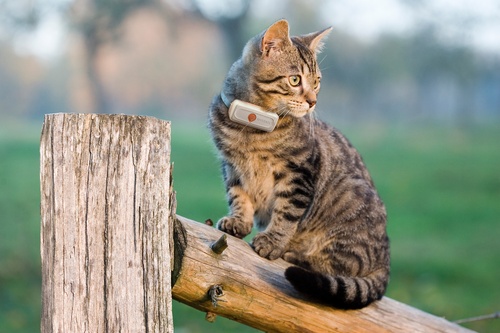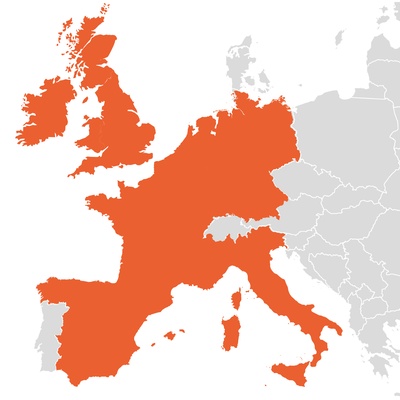
Beyond common misconceptions, this survey analyzes the actual dangers cats are exposed to, taking into account their age, lifestyle, and environment. Inspired by the study carried out in 2021 in Germany, commissioned by TASSO and conducted by the University of Veterinary Medicine in Vienna, our research was expanded to a European scale. This broader approach offers a representative and comparative view of collar use and perceptions.
The study is based on responses from over 2,000 participants, gathered from Weenect customers in France, Belgium, Spain, Italy, Germany, and the United Kingdom, as well as non-costumers through a Meta campaign. It includes a wide range of cat owners and feline profiles, living in urban or rural areas, with or without outdoor access.
Discover the detailed results of our study through a series of insights illustrated with charts.
The most frequent outdoor accidents among cats include fights with other animals (34.46%), getting trapped somewhere (27.07%) — such as in a garage, up on a tree, a storm drain, or inside a car — disappearances (21.86%), and road accidents (10.83%). These incidents are often linked to the cat’s curiosity and movement across a wide territory.
Indoor cats are not exempt from accidents: 25.3% of them have already experienced a domestic incident. Falls from furniture or balconies account for 47.5% of these cases, followed by ingestion of dangerous objects (17.5%) and poisoning (12.5%). Even in a closed environment, risks remain very real.
Nearly one in two respondents (48.18%) said they had hesitated to put a collar on their cat, mainly due to fear of them getting stuck. This concern is also the leading reason cited by those who choose not to use one: 52.73%, compared to 31.64% who consider collars unnecessary, and 15.62% who believe their cat won’t tolerate it. Yet no reports of serious injury related to collars were mentioned in the survey responses.
Among the 2,000 people surveyed, only 9 collar-related accidents were reported — just 0.47% of respondents. None of these incidents resulted in the death of the cat or required a vet visit. Contrary to popular belief, wearing a collar is not dangerous for cats. The very low number of reported accidents clearly shows that the risks associated with collars are extremely limited.
The survey reveals a high level of satisfaction among cat collar users (identification collars, breakaway collars, flea collars, bells, GPS trackers, etc.): 96% of respondents who have their cat wear a collar report being satisfied with it. Wearing a collar does not appear to cause any significant issues with adaptation or discomfort for the animal.
Owners assign several essential functions to the collar: GPS tracking is the primary reason for use (57.82%), followed by identification via tag or number (20.58%), and improved nighttime visibility (14.39%). These safety- and prevention-oriented uses confirm that the collar is perceived as a reliable, useful tool, well-suited to the real needs of cats and their owners.
The survey shows that 67.43 % of cats living in rural areas have already experienced an outdoor accident (road accident, fight with another animal, disappearance...), compared to 58.15 % in urban areas. Proximity to a busy road also raises the risk: 12.21% of cats living near high-traffic roads have been involved in a road accident — nearly twice as many as those living far from traffic.
A cat’s age also impacts the risk: cats aged 1 to 5 years are the most affected, with an accident rate of 68.2%, compared to 47.5% for cats under one year old and 54.8% for cats over ten. Young adults, actively exploring their territory, are therefore at the highest risk (fights with other animals, getting trapped — in trees, garages, storm drains, etc. — or disappearing).
The survey shows that, contrary to popular belief, collars do not pose a risk to cats. Out of more than 2,000 respondents, only 9 minor incidents were reported—none with serious consequences or requiring veterinary care. These figures confirm that the risks associated with wearing a collar are extremely low.
According to the study, the main concerns about collars come from people who don’t use them. The fear of the collar getting stuck is widespread among non-users (52.73%), even though the facts contradict this perception. On the other hand, 96% of owners whose cats wear a collar are satisfied, highlighting its usefulness for safety, visibility, and above all, geolocation.
These findings are in line with the study by the Veterinary Medicine in Vienna and TASSO, but go even further: across our entire European sample, no collar-related deaths were reported. However, it is essential to choose a suitable safety collar - either elastic or with an automatic release - to fully guarantee your pet's protection. These studies clearly demonstrate that collars do not endanger cats—in fact, they help prevent daily risks.
To access the most relevant information, suitable payment methods, and delivery in your region, please select the website corresponding to your country.





